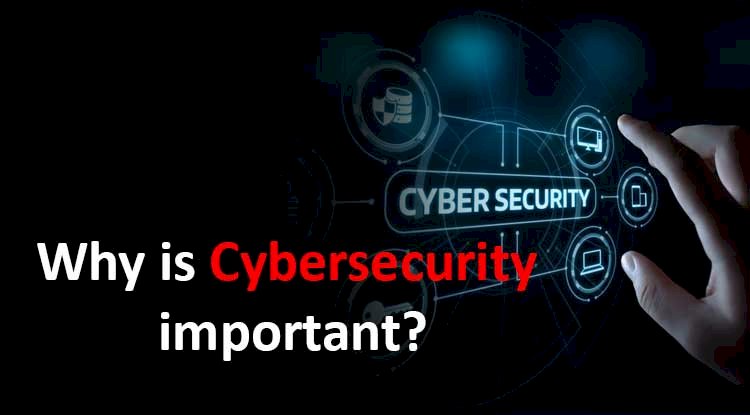What is Cybersecurity and Why is Cybersecurity Important?
Cybersecurity is a combination of computer network defense and information assurance. Computer networks consist of various types of devices that communicate via a variety of transmission mediums; computers, servers, routers, wireless access points, hubs, printers, etc.

These systems need to work together seamlessly in order to run effectively. There are many different ways hackers could try to break into these systems, but they all have one goal in mind – to get in!
Risks of cyberattacks
There are three main categories of risks associated with cybersecurity attacks:
a) Business risk - A business might lose money due to fraudulent activities of its employees or contractors.
b) Loss of Intellectual Property - An organization may suffer losses or even lose their competitive advantage if third parties obtain proprietary information.
c) Risk of Data Breach - Organizations face high-costs when dealing with data breaches. According to the US Department of Health and Human Services, healthcare organizations experienced costs between $14 million and $25 million per year after a breach.
How cybersecurity helps business
The following benefits businesses enjoy because of cybersecurity:
a) Cost Savings - Security helps reduce the cost associated with business downtime caused by malware infections, viruses, phishing schemes, denial of service attacks, and spam email campaigns. Companies can avoid paying for services that would otherwise not be necessary.
b) Improved Reliability - Because of increased reliability, cybersecurity reduces downtime and increases productivity.
c) Increased Productivity - By reducing the time spent recovering from cyber incidents, companies increase productivity.
1. Why is cybersecurity important?
Every business in today's world relies heavily on data and information technology systems. As the digital age grows, businesses face greater risks to their data security. Cybersecurity ensures that sensitive data (like customer records) remains secure, while protecting the company from cyber-attacks.
2. What are common types of attacks?
There are two broad categories of attacks; network based and application based. A network attack occurs when someone alters or accesses information over a network. An application based attack, commonly called a virus, is when malware infects software on user devices (e.g., mobile phones, laptops, etc.) rather than the network.
3. How do viruses work?
A virus is a self-replicating program that can spread between computers and software applications using some kind of connection (file transfer protocol). Once infected, it may begin sending out copies of itself as well as code that allows it to continue communicating with its host computer. There are three basic steps involved in how a virus operates:
a. Infection - When users open a file or click on a link sent via email, text message, instant messaging, social networking or any type of communications system, the user�s device becomes infected with malicious software known as malware.
b. Propagation - Malware continues to replicate and send copies of itself to other devices connected to the same network. If the original malware was uploaded from a website, then the site will likely become infected as well.
c. Command & Control - Infected devices now have instructions from the attacker telling them where to go and what to do. These instructions can range from simple commands to conduct further attacks, or to steal financial information, sell personal information or even cause damage to other devices.
4. What are some of the major concerns about cyber-attacks?
The biggest concern is that hackers are becoming increasingly sophisticated at launching these attacks faster, more effectively and with less detection. In addition, they frequently use tools that make it difficult for organizations to detect and stop the attacks. Finally, once attackers gain access to an organization�s data, they often hold onto it until they �cash in.�
5. What are some measures companies should take to protect themselves?
Companies need to develop a comprehensive strategy to address cyber threats. While not all threats require the same level of effort or investment, each threat has specific characteristics that can help determine the best course of action. Depending on the nature of the threat, different levels of protection might be implemented, including: monitoring and compliance, securing networks and services, patching software, training employees, and developing a plan for recovery.














![Top 10 Ethical Hackers in the World [2025]](https://www.webasha.com/blog/uploads/images/202408/image_100x75_66c2f983c207b.webp)








